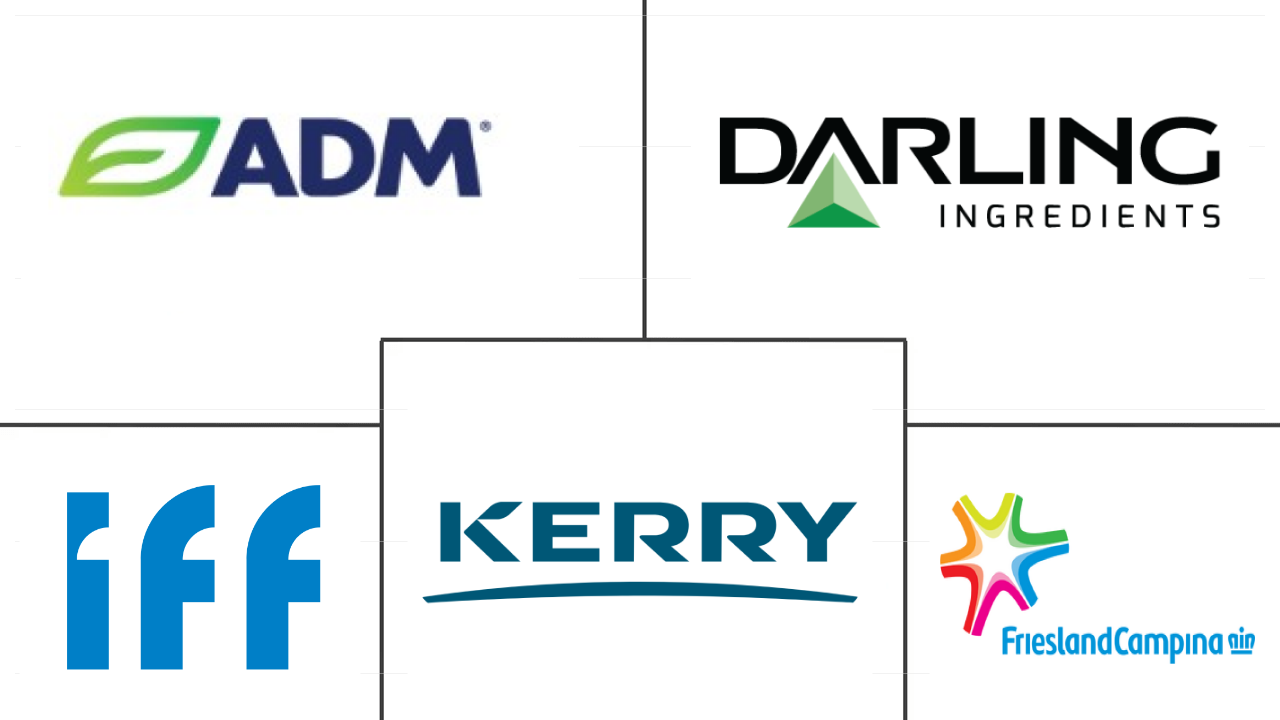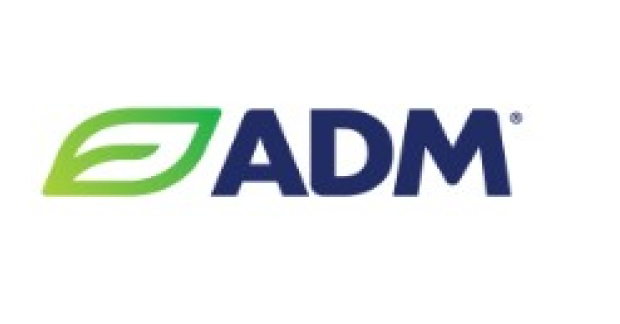Market Size of europe protein Industry
| Icons | Lable | Value |
|---|---|---|
|
|
Study Period | 2017 - 2029 |
|
|
Market Size (2024) | USD 5.61 Billion |
|
|
Market Size (2029) | USD 7.01 Billion |
|
|
Largest Share by End User | Food and Beverages |
|
|
CAGR (2024 - 2029) | 4.55 % |
|
|
Largest Share by Country | Russia |
|
|
Market Concentration | Low |
Major Players |
||

|
||
|
*Disclaimer: Major Players sorted in no particular order |
Europe Protein Market Analysis
The Europe Protein Market size is estimated at 5.61 billion USD in 2024, and is expected to reach 7.01 billion USD by 2029, growing at a CAGR of 4.55% during the forecast period (2024-2029).
5.61 Billion
Market Size in 2024 (USD)
7.01 Billion
Market Size in 2029 (USD)
4.29 %
CAGR (2017-2023)
4.55 %
CAGR (2024-2029)
Largest Market by Product Type
40.29 %
value share, Soy Protein, 2023
The widespread use of soy protein as a food ingredient accompanied by the growing consumer interest in plant proteins is driving the segment growth in the region.
Largest Market by End User
59.27 %
value share, Food and Beverages, 2023
The F&B industry dominates the market, primarily led by bakery and meat and dairy alternatives due to their functionalities that make them highly preferred ingredients.
Fastest Market by Product Type
9.21 %
Projected CAGR, Pea Protein, 2024-2029
Pea protein functionalities such as gelation, solubility, viscosity, water, and oil holding capacity, and emulsion ability drive its application in the F&B industry.
Fastest growing Market by End User
5.68 %
Projected CAGR, Personal Care and Cosmetics, 2024-2029
Protein-enriched skin, body, and hair care products are on the rise. Players are also offering protein ingredients with distinct concentrations as per customer requirements.
Leading Market Player
10.65 %
market share, Archer Daniels Midland Company, 2021

Archer Daniels Midland Company's leading position can be attributed to its extensive offering in human and animal nutrition, and is one of the most active market player.
Rising number of vegan and flexitarian population with emerging indulgence towards natural products is making the segmental growth
- By application, the food and beverage industry led the application sector for proteins in the region, accounting for a major volume share. The share was highly influenced by the dairy- and meat-alternative industries that accounted for 23% of the overall proteins consumed in the region. The share is primarily driven by the rising number of vegan and flexitarian consumers who increasingly rely on or are open to animal-free product offerings in the market. As of 2020, the number of vegans in Europe has doubled from 1.3 million to 2.6 million, representing 3.2% of the population. However, despite the largest share, the food and beverage market is yet to outpace its growth rate, and it is anticipated to register a volume CAGR of 4.17% during the forecast period.
- It is followed by the animal feed segment, which is largely driven by the application of plant proteins, which is also anticipated to register the fastest growth rate of 4.28% during the forecast period. This is largely due to growing government initiatives in the plant protein segment. For instance, in 2022, EU member states joined forces to call for a continent-wide plant protein strategy, which they say is needed “more than ever” in light of the war in Ukraine. This European strategy would bolster the already existing commitment of the EU executive, which, in a 2018 report, called for the development of plant proteins in the European Union.
- By value, among all the end-user segments, the personal care and cosmetics segment is anticipated to register the fastest growth rate of 5.04% during the forecast period. The emerging indulgence toward natural products with rising interest in the list of ingredients is highly driving growth. About 37% in Germany and 27% in France used a natural/organic cosmetic in 2021.
growing demand for healthy food is driving the regional demand with demand dominated by Russia, France and rest of Europe segments
- With the region's rising health consciousness, the Rest of Europe segment, which includes countries like Ukraine, Poland, Greece, Austria, Belgium, and Norway, dominates in terms of protein consumption. In 2021, healthy food consumed in eight of the European Union's member countries accounted for about 70% of the total. About one-third of the population in Belgium consumed vegetarian burgers in 2022. For the uninitiated, over 25.8% of residents in Austria were flexitarian in 2022, driving the consumption of protein foods.
- Russia remained the largest protein consumer in the region, after the Rest of Europe segment. Heavy product developments, government initiatives, investments, and high demand from the food and beverage sector drove the demand. Among all protein types, the country's protein consumption is largely driven by plant protein types, with a market share of 61.3%, by value, in 2022. The market is witnessing high demand for animal-free protein alternatives, with a growing number of vegetarians in the country. Soy protein dominates consumption in the country, with a value share of 36%, by value, in 2022.
- Among all the countries, France is anticipated to record the fastest growth rate during the forecast period, registering a CAGR of 5.02% by volume. The country's protein consumption is largely driven by the meat and meat alternatives segment, with the consumers growing preference for plant-based meat products. The country has a growing vegan and vegetarian population, largely driving the segmental growth. For instance, vegetarians and vegans represent 2% of the French population (about 1.3 million people) and 0.5% (about 340,000 people), respectively, while flexitarians represented nearly 23 million people in 2021.
Europe Protein Industry Segmentation
Animal, Microbial, Plant are covered as segments by Source. Animal Feed, Food and Beverages, Personal Care and Cosmetics, Supplements are covered as segments by End User. Belgium, France, Germany, Italy, Netherlands, Russia, Spain, Turkey, United Kingdom are covered as segments by Country.
- By application, the food and beverage industry led the application sector for proteins in the region, accounting for a major volume share. The share was highly influenced by the dairy- and meat-alternative industries that accounted for 23% of the overall proteins consumed in the region. The share is primarily driven by the rising number of vegan and flexitarian consumers who increasingly rely on or are open to animal-free product offerings in the market. As of 2020, the number of vegans in Europe has doubled from 1.3 million to 2.6 million, representing 3.2% of the population. However, despite the largest share, the food and beverage market is yet to outpace its growth rate, and it is anticipated to register a volume CAGR of 4.17% during the forecast period.
- It is followed by the animal feed segment, which is largely driven by the application of plant proteins, which is also anticipated to register the fastest growth rate of 4.28% during the forecast period. This is largely due to growing government initiatives in the plant protein segment. For instance, in 2022, EU member states joined forces to call for a continent-wide plant protein strategy, which they say is needed “more than ever” in light of the war in Ukraine. This European strategy would bolster the already existing commitment of the EU executive, which, in a 2018 report, called for the development of plant proteins in the European Union.
- By value, among all the end-user segments, the personal care and cosmetics segment is anticipated to register the fastest growth rate of 5.04% during the forecast period. The emerging indulgence toward natural products with rising interest in the list of ingredients is highly driving growth. About 37% in Germany and 27% in France used a natural/organic cosmetic in 2021.
| Source | ||||||||||||
| ||||||||||||
| ||||||||||||
|
| End User | |||||||||||||
| Animal Feed | |||||||||||||
| |||||||||||||
| Personal Care and Cosmetics | |||||||||||||
|
| Country | |
| Belgium | |
| France | |
| Germany | |
| Italy | |
| Netherlands | |
| Russia | |
| Spain | |
| Turkey | |
| United Kingdom | |
| Rest of Europe |
Europe Protein Market Size Summary
The Europe Protein Market is experiencing a dynamic shift, driven by evolving consumer preferences and industry innovations. The market is predominantly led by the food and beverage sector, which holds a significant share due to the increasing demand for dairy and meat alternatives. This trend is largely influenced by the growing number of vegan and flexitarian consumers who are leaning towards animal-free products. The animal feed segment is also witnessing substantial growth, propelled by government initiatives promoting plant proteins. The personal care and cosmetics sector is emerging as a fast-growing segment, fueled by a rising interest in natural and organic ingredients. The Rest of Europe, including countries like Ukraine, Poland, and Belgium, shows a strong inclination towards protein consumption, reflecting a broader health consciousness across the region.
Russia stands out as a major consumer of proteins, with a notable preference for plant-based options, while France is anticipated to experience rapid growth in protein consumption, particularly in the meat and meat alternatives segment. The UK continues to see a rise in whey protein consumption, driven by the popularity of fitness centers and a growing interest in clean-label sports nutrition products. The market is characterized by a fragmented landscape with key players like Archer Daniels Midland Company, Darling Ingredients Inc., and Kerry Group plc, among others, actively introducing innovative products. The European Union's commitment to enhancing plant protein production further underscores the region's strategic focus on sustainable and health-oriented protein solutions.
Europe Protein Market Size - Table of Contents
-
1. MARKET SEGMENTATION (includes market size in Value in USD and Volume, Forecasts up to 2029 and analysis of growth prospects)
-
1.1 Source
-
1.1.1 Animal
-
1.1.1.1 By Protein Type
-
1.1.1.1.1 Casein and Caseinates
-
1.1.1.1.2 Collagen
-
1.1.1.1.3 Egg Protein
-
1.1.1.1.4 Gelatin
-
1.1.1.1.5 Insect Protein
-
1.1.1.1.6 Milk Protein
-
1.1.1.1.7 Whey Protein
-
1.1.1.1.8 Other Animal Protein
-
-
-
1.1.2 Microbial
-
1.1.2.1 By Protein Type
-
1.1.2.1.1 Algae Protein
-
1.1.2.1.2 Mycoprotein
-
-
-
1.1.3 Plant
-
1.1.3.1 By Protein Type
-
1.1.3.1.1 Hemp Protein
-
1.1.3.1.2 Pea Protein
-
1.1.3.1.3 Potato Protein
-
1.1.3.1.4 Rice Protein
-
1.1.3.1.5 Soy Protein
-
1.1.3.1.6 Wheat Protein
-
1.1.3.1.7 Other Plant Protein
-
-
-
-
1.2 End User
-
1.2.1 Animal Feed
-
1.2.2 Food and Beverages
-
1.2.2.1 By Sub End User
-
1.2.2.1.1 Bakery
-
1.2.2.1.2 Beverages
-
1.2.2.1.3 Breakfast Cereals
-
1.2.2.1.4 Condiments/Sauces
-
1.2.2.1.5 Confectionery
-
1.2.2.1.6 Dairy and Dairy Alternative Products
-
1.2.2.1.7 Meat/Poultry/Seafood and Meat Alternative Products
-
1.2.2.1.8 RTE/RTC Food Products
-
1.2.2.1.9 Snacks
-
-
-
1.2.3 Personal Care and Cosmetics
-
1.2.4 Supplements
-
1.2.4.1 By Sub End User
-
1.2.4.1.1 Baby Food and Infant Formula
-
1.2.4.1.2 Elderly Nutrition and Medical Nutrition
-
1.2.4.1.3 Sport/Performance Nutrition
-
-
-
-
1.3 Country
-
1.3.1 Belgium
-
1.3.2 France
-
1.3.3 Germany
-
1.3.4 Italy
-
1.3.5 Netherlands
-
1.3.6 Russia
-
1.3.7 Spain
-
1.3.8 Turkey
-
1.3.9 United Kingdom
-
1.3.10 Rest of Europe
-
-
Europe Protein Market Size FAQs
How big is the Europe Protein Market?
The Europe Protein Market size is expected to reach USD 5.61 billion in 2024 and grow at a CAGR of 4.55% to reach USD 7.01 billion by 2029.
What is the current Europe Protein Market size?
In 2024, the Europe Protein Market size is expected to reach USD 5.61 billion.

